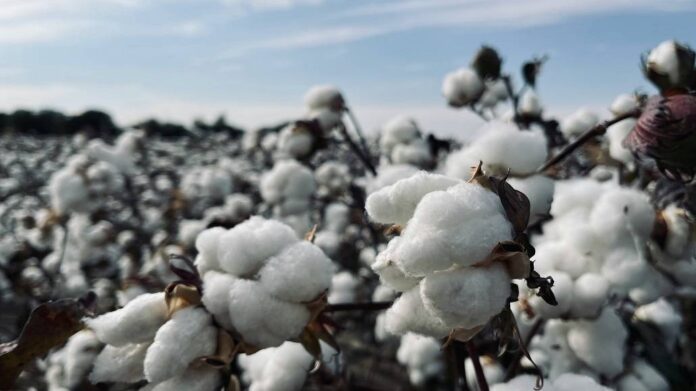India is on the brink of a crucial agreement with the United States regarding tariffs, particularly affecting the cotton trade. As of July 7, the U.S. announced new tariffs, including 40% on Myanmar and Laos, 36% on Cambodia and Thailand, 35% on Bangladesh, and 25% for Japan, Malaysia, South Korea, and Tunisia.
In recent weeks, Indian negotiators have diligently worked towards finalizing a deal, recognizing the importance of cotton trade for both nations. India, as the leading global cotton producer, and the U.S., the foremost exporter of the fiber, both have a stake in the outcome.
Cotton holds a central role in this trade dynamic. India produces approximately 5.5 to 6 million metric tons of cotton annually, with a significant portion consumed domestically due to its vast textile and apparel sector, a vital component of the national economy. Additionally, India exports raw cotton, yarn, and textiles to major garment-producing countries such as Bangladesh, China, and Vietnam.
Conversely, the United States produces around 4 to 5 million metric tons of cotton each year and is a major player in global cotton exports, with over 80% of its cotton shipped overseas. Its highly mechanized farming methods ensure consistent quality and supply, primarily serving markets in Asia, including Bangladesh, China, Vietnam, and Türkiye.
The trade relationship between India and the U.S. concerning cotton has been both complementary and competitive. The U.S. exports raw cotton to India, particularly during times of short domestic production, while India supplies value-added cotton products to the U.S., leveraging its status as a major consumer market.
However, recent geopolitical tensions, climate variations, and shifts in trade policies—including tariffs and subsidies—have complicated this balance. Currently, the U.S. is considering raising the tariff rate on Indian exports from 10% to 26%, which has become a significant hurdle in ongoing negotiations. The agricultural trade between India and the U.S. is modest, sitting at about $8 billion annually, with India exporting commodities like rice and shrimp, while the U.S. sends nuts and apples.
As discussions continue, Washington aims to boost its agricultural exports to India, including maize, soybeans, and cotton, in an effort to reduce its $45 billion trade deficit with the country. Recently, President Trump signed the ‘One Big Beautiful Bill’ (OBBB), a sweeping piece of legislation that aims to protect two million U.S. family farms by eliminating double taxation. The bill has garnered praise from various industry groups, including the U.S. National Cotton Council (NCC), which emphasized its importance in supporting American cotton producers amidst ongoing challenges.
“This legislation represents a significant step forward for cotton producers, the cotton supply chain, and the broader agricultural community, providing vital support to help us continue to provide the world with the highest quality fiber while navigating ongoing challenges,” stated NCC chairman Patrick Johnson.
Nevertheless, experts warn that tariff concessions may pressure India to reconsider its minimum support prices (MSP) and public procurement strategies. Cotton is a politically and economically sensitive issue in India, affecting over 700 million people in rural areas. Although other contentious issues exist—such as tariffs on Indian steel and auto components—negotiators remain hopeful for a mutually beneficial resolution.
“There are two real challenges to concluding an initial agreement,” noted Richard Rossow of the Center for Strategic and International Studies in Washington. “First on the list is U.S. access to the Indian market for basic agriculture products. India will need to protect its basic agriculture sector for economic and political reasons. For years, Washington has pushed for greater access to India’s farm sector, seeing it as a major untapped market, but India has fiercely protected it, citing food security, livelihoods, and the interests of millions of small farmers.”


































